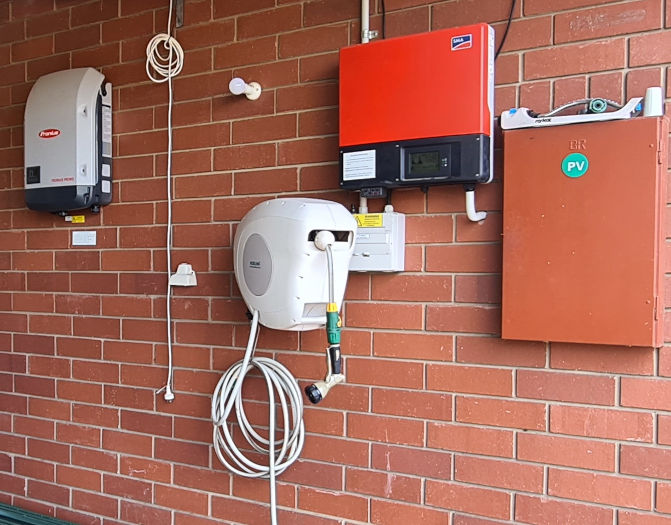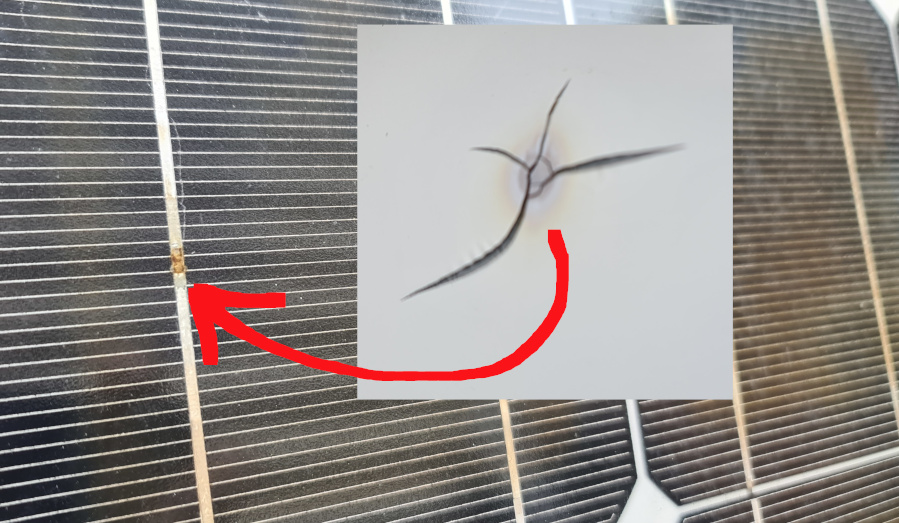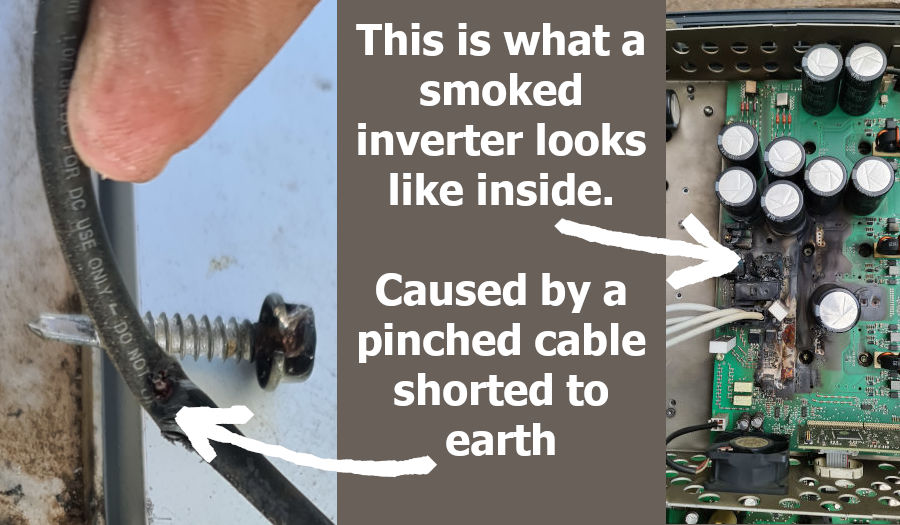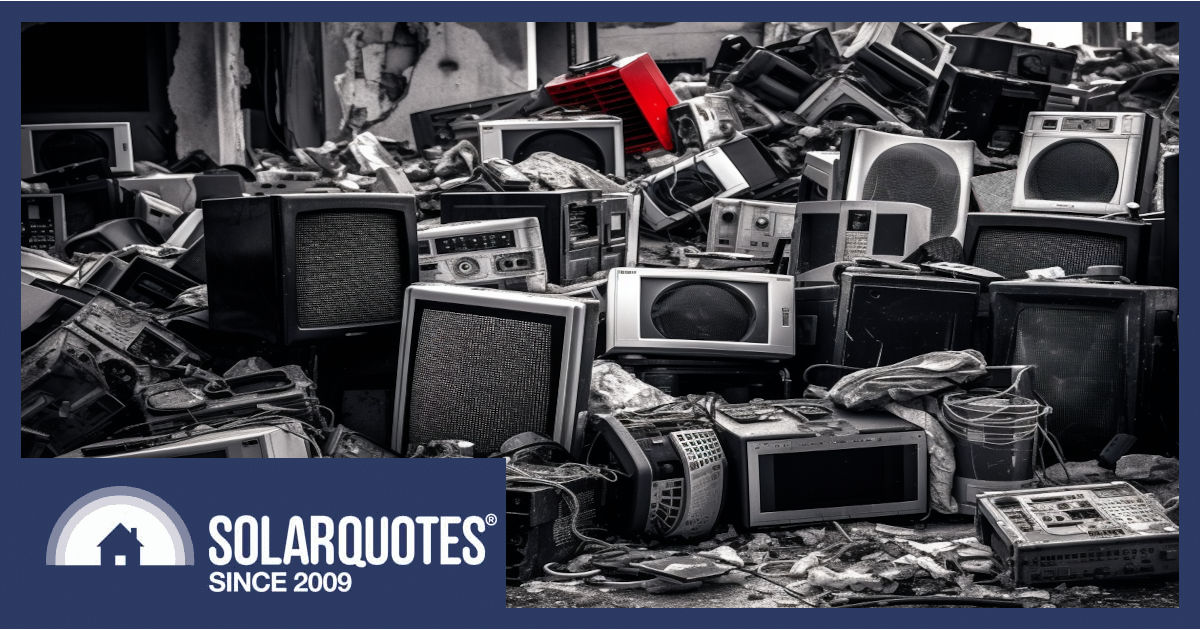The recently enacted Flexible Exports rules for new solar power systems in South Australia set a global example for grids with lots of rooftop solar. However, there’s an unexpected fallout for rooftop solar owners. And although this is currently only a problem in SA, the rest of Australia needs to learn from our mistakes to prevent a mountain of e-waste as Flexible Exports likely become mandatory nationwide in the coming years.
Thousands Of Good Inverters Are Going In The Bin
Want to upgrade your existing solar power system in South Australia? Brace yourself for a hurdle. The new Dynamic/Flexible export rules necessitate a fresh connection agreement with the local electricity network operator: SA Power Networks (SAPN). Few existing solar inverters will comply with the new regime, and because the new rules don’t grandfather existing equipment, everything on site will need to be new. Your perfectly good solar inverter, and maybe the entire system, will be rendered obsolete.
Just to be clear: if you don’t upgrade your solar energy system, no one will force you to modify it to the new rules. But if you upgrade – the whole shebang needs to comply.
Old, Small Solar Won’t Be Missed So Much
Early solar adopters often opted for smaller systems because they were horrendously expensive. Even with an $8000 federal grant, a 1kW system still set you back $4000. While these systems may have reached the end of their lives and aren’t considered a significant loss, their impact has been profound. They’ve helped establish a new workforce in the renewable energy sector and normalised the use of solar power.
But Recent, Big Solar Power Systems Should Not Be Euthanised
It’s the medium-term and recent solar adopters who are set to feel the squeeze. These folks invested twice as much for a system five times the size. Returns have been good, albeit more moderate, thanks to less generous feed-in tariffs. Many of these owners have well-functioning systems, many still under warranty. Understandably, when considering expanding their solar, they might be less than thrilled to discover that their equipment may soon be classified as e-waste or sold for peanuts on the second-hand market.
I installed a lot of SMA inverters with 5 or 6kW systems and people have often rung up looking for another. “I want one of those red boxes! We need double the system size” These people will be horrified to have to dispose of a faithful servant.

Augmented by a later Fronius, this venerable red SMA TL5000 is still going, but its days are numbered as more solar is slated for this property.
Why Would They Do This?
Essentially the network, SAPN, sees the Flexible Export rules as an opportunity to get everyone up to speed and get the vast number of solar generators under control. One way to do this is to enforce the new rules on upgraded systems as well as whole new systems. We must understand that they want this rooftop solar resource, which has grown like a weed, brought into a system they can manage without slashing and burning the garden.
From SAPN’s standpoint, managing a volatile network is no small task. The primary goal of the new rules is to exert tighter control over solar generation because keeping the network stable when there’s a large uncontrolled generator pumping power in from the bottom end is as tricky as it is essential. So far, they’ve managed admirably, even if some rules had to be temporarily broken along the way.
The new Flexible Export system allows local electricity network operators to dial down solar generation when demand is low, avoiding the brute force remote shutdown approach of Smarter Homes in SA or the emergency backstop in Queensland.
One silver lining with these rules for upgraded systems is that old solar can be problematic.
The Problems That Come With Ageing Rooftop Solar
Although a well-functioning solar array may serve its purpose, ageing solar arrays can be a Pandora’s box. Corroded racking hardware, faulty plugs between modules, unseen hotspots & backsheet cracks can create problems that can’t be ignored once identified.

Damage isn’t often easy to see from the sunny side
Earth Leakage
Earth leakage can be a problem in any solar power system. Moisture gets into places it shouldn’t, and electricity can take the same path out, which means potential electric shock hazards, and in properly monitored systems, actionable alarms & email notifications. Sometimes old solar will trip a new inverter.
What’s more problematic is that if you install a new inverter with old panels, your warranty may be at risk. It might sound like a rort, but the reasoning is sound.
I have been scared witless when a brand new inverter has gone bang like a shotgun. Freshly commissioned and just minutes into its life, a significant earth fault has literally blown up the unit and tripped the main breaker for the house. Unfortunately insulation testing proved inconclusive until after it had consumed a second inverter.

Errant screws are always a risk.
If You Want To Upgrade Your Solar In SA, Here Are Your Options:
There are a few ways to upgrade your solar energy system in SA, depending on your desired outcome, urgency, budget and roof space:
- Do nothing. Wait until your existing inverter dies, and get some quotes when it does. This potentially leaves you staring down many years of unpleasant electricity bills before you can upsize your solar.
- Keep your existing solar and bolt on an AC-coupled battery. If you don’t have enough solar on the roof to charge the battery through the year – look into SA’s solar sponge tariff, where retailers such as ioenergy offer daytime electricity for 8c per kWh. Be careful to avoid the evening peak of 75c per kWh, though.
- Replace everything. Cover the roof with solar, take advantage of the new wiring standards and eliminate the potential fire hazard from rooftop isolators. Make it all complaint and have it all under a new warranty. The bonus being that instead of the old 5kW hard limit, exports will, for most of the time, run at 10 kW per phase.
- Install additional new solar on the roof and use the legacy array on your second (or third) input channel. If you add a battery at the same time, it will allow even more capacity. So in a typical single-phase install, replace your 5kW inverter with a 10kW unit, and with the right gear, you may get a whacking 20kW of solar power on the roof. This will require panels less than ten years old1 a clued-up solar installer, bespoke design and – as mentioned above, some installers may not entertain reusing an old array.
The Trade-Off Between Solar Progress and E-Waste
Rooftop solar in South Australia is over 1.1kW per South Aussie, blasting past the national average of 732 watts per Aussie. Approximately 42.4% of dwellings in South Australia have systems installed, and SA’s love affair with solar power shows no signs of slowing.
We need these new solar rules to cope, but they bring a headache for old system owners who may end up junking still-good equipment. As this unfolds, it’s a wake-up call for the rest of Australia – we’ve got to balance our solar future, grid-management, and avoid perfectly good solar panels and inverters needlessly going to waste.
Footnotes
- they need to be fire-rated ↩


 RSS - Posts
RSS - Posts



I live in SA where the rules have been more than a bit odd at times. In 2018 we had a Fronius Primo 5.0 – 5.0kW single phase inverter and 17 Q cells (Q-Cells Q.PLUS BFR-G4.1 280W poly with Q.ANTUM 32mm Frame) put on the house. I wanted more but SA Power networks had banned the use of export limiting and only allowed 5Kw.
Can I put more than 5Kw that on now and just export limit the system to 5Kw? I’m willing to have the inverter set to 0 export if that’s the only way to keep them happy. Then again for all I know they may still be forcing people not to use export limiting when they ought to strongly encourage it.
Hi Anthony, can we get a clear understanding of the changes in South Australia and which different suplier’s systems arteries, inverters and solar panels comply with the South Australian rules. I am in Victor with a legacy system installed in 2011. Fortunately I am on the high feed in Tarif of $0.66 so can’t touch it until November 2024. I planning to then scrap the panels as they are looking dodgy now and will definitely not make the 25 year life expectancy. Hope to keep the SMA Inverter but not sure if this will be possible. Planning on a 13 kW solar panel system.
I am sure that the rest of Australia will need to follow the South Australian rules if they are sensible and want to make sure that I specify exactly what the system should comply with when when I start asking for quotes around August September next year.
Hope that you would be able to give us some practical guidance on this topic.
Poking forward to your response
Chev Vviers
I’m getting on the phone to my installer asap.
Just spent 30k on my system then I read this…
There is a related problem if you want to move your existing panels, as I did when I built a second storey on my house. The panels were warranted for twenty years, but the importer only ‘registered’ them for five years. That meant that, at eight or nine years old, they all had to go to the tip.
This is an outrageous rort which must be dealt with.
Regarding #3, Make it all complaint or make it all compliant? Not quite the same thing! : – P
And just to clarify, a like for like replacement is not considered an upgrade? So if your inverter dies you can replace it without issue, or if a few panels have problems they can be replaced, but as soon as you add more kWh to your system you run into the new rules? This is probably bordering on a ‘duh yes’ question, but rules can be funny things sometimes.
Sorry I just want to point out that you did not warn people that receive the SA Government 44 cent feed in tariff. If they altered their system before 2028 they will lose the SA Government 44 cent feed in tariff.
Good point Joe,
I think most Pfit customers realise they’re unable to expand their system but I’ve had to defend a couple of customers from; well I guess youd say spurious SAPN determinations before, so we should make it explicit, they’re looking to bump people off the 44c tariff wherever possible, so alterations aren’t allowed.
This article we (at SA Power Networks) believe is based on a false assumption – that South Australians will start dumping their solar panels or inverters because of a rule change.
Most probably don’t even know about the rule change and many have good reason to hang on to their existing system for as long as possible. Also noting that that neither the SA Government’s new rule (Dynamic Export requirements) or SA Power Networks’ Flexible Exports option require customers to remove existing equipment as the new rules only apply for new customers and those who are upgrading systems.
Existing solar customers are on a 5kW fixed limit and a third of them are receiving a very generous State Government FiT tariff until mid 2028. These are likely to be a significant disincentive to customers changing their system.
A change over is more likely to happen because a proportion of systems installed will be starting to age with reducing energy generation efficiency or are parts may fail.
People making changes (upgrading an existing system) will have the very exciting option of Flexible Exports up to 10kW per phase for their surplus energy.
In terms of compliance, introduction of the new rules by the State Government, our efforts to work with industry to develop understanding of the changes, development of our Flexible Exports option to assist the industry and our implementation of simplified and improved systems for recording applications, approvals and installation has shown a dramatic improvement in compliance.
Hi Paul,
Thanks for the comment, I’m chuffed. It’s nice to know someone who’s really at the heart of the issue is reading our material and has the time to respond. I trust you’ll point out if we get it wrong, so corrections can be made.
This article just points out some people will be forced to dump good solar equipment if they invest in more solar.
We should be more explicit, the rule changes aren’t retrospective but they will affect progress, so we’re obliged to inform those who probably don’t even know about the rule change.
We wholeheartedly agree that flexible exports are an exciting development and the compliance mechanism is great. This could be a master stroke by SAPN because finally someone has the power to compel better installation. CEC standards enforcement, which at very least affects earth fault alarm in a solar PV system, is an industry wide joke.
All we need now is to make sure delinquent WiFi connections are identified quickly and restored easily. While customer WiFi is certainly fast, it’s an inherently fickle way to control the state’s biggest generation asset.
I should ask for clarification though Paul,
If a customer who has an existing system decides they would like to expand their capacity, can they retain their old hardware by reverting to a 1.5kW fixed export limit?
Our suggestion would be that if you have say a system that is compliant with ANZS 4777:2016 (March 2017 onward) or at very least AS 4777:2020 (Dec 2021 onward) it should be allowed to stay under the existing fixed 5kW fixed limitation, with any new capacity set for zero export (or under flexible control?)
Legacy Fronius systems might work under the new scheme but conversely we have installers in SA struggling to work out compatibility for Enphase systems. The popular IQ7 microinverter has not & will not be witness tested by SAPN, so people who bought these systems thinking they can be expanded later are stuck, as are installers with stock on hand.
Hi Paul,
Do the flexible export limit up to 10kw per phase apply to country areas where SWER lines or 2 phase lines provide the connection?